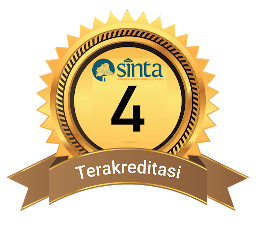Pengaruh Model Pembelajaran Predict-Observe-Explain (POE)Terhadap Pemahaman Konsep Siswa Materi Kesetimbangan Kelarutan Kelas XI MIA SMAN 2 Labuapi Tahun Ajaran 2017/2018
DOI:
10.29303/cep.v1i2.956Published:
2019-02-11Issue:
Vol. 1 No. 2 (2018): NovemberArticles
Downloads
How to Cite
Abstract
Penelitian ini bertujuan untuk mengetahui ada atau tidaknya pengaruh model pembelajaran Predict-Observe-Explain (POE)terhadap pemahaman konsep siswa materi kesetimbangan kelarutanÃÂ kelas XI MIA SMAN 2 Labuapi tahun ajaran 2017/2018. Jenis penelitian yang digunakan berupa penelitian eksperimen semu dengan desain penelitian Nonequivalent Control Group Design. Populasi dalam penelitian ini adalah seluruh siswa kelas XI MIA SMAN 2 Labuapi. Sampel dalam penelitian ini yaitu kelas XI MIA 1 dan XI MIA 2 yang ditentukan melalui teknik pengambilan sampel jenuh. Variabel bebas dalam penelitian ini adalah model pembelajaran Predict-Observe-Explain (POE)untuk kelas eksperimen dan model pembelajaran konvensional untuk kelas kontrol. Variabel terikatnya adalah pemahaman konsep siswa dalam materi kesetimbangan kelarutan. Teknik pengumpulan data dilakukan dengan pemberian pretest dan posttest dalam bentuk tes uraian untuk mengukur pemahaman konsep siswa. Pengujian hipotesis dilakukan dengan menggunakan Gain uji-t dengan pengambilan keputusan didasarkan pada uji hipotesis satu pihak (uji pihak kanan). Gain uji-t digunakan untuk menganalisis data pemahaman konsep siswa, didapatkan thitung (1,35) < ttabel (2,021). Hasil tersebut menunjukkan bahwa model pembelajaran Predict-Observe-Explain (POE) tidak berpengaruh terhadap pemahaman konsep siswa materi kesetimbangan kelarutan kelas XI MIA SMAN 2 Labuapi tahun ajaran 2017/2018.
Author Biographies
ahmad alhanaen as suhaesa, program studi pendidikan kimia, FKIP Universitas Mataram
yayuk Andayani, Program studi pendidikan kimia, FKIP Universitas Mataram
Muti'ah Muti'ah, Program studi pendidikan kimia, FKIP Universitas Mataram
Yunita Arian Sani Anwar, Program studi pendidikan kimia, FKIP Universitas Mataram
License
Authors who publish with Chemistry Education Practice agree to the following terms:
- Authors retain copyright and grant the journal right of first publication with the work simultaneously licensed under a Creative Commons Attribution License 4.0 International License (CC-BY-SA License). This license allows authors to use all articles, data sets, graphics, and appendices in data mining applications, search engines, web sites, blogs, and other platforms by providing an appropriate reference. The journal allows the author(s) to hold the copyright without restrictions and will retain publishing rights without restrictions.
- Authors are able to enter into separate, additional contractual arrangements for the non-exclusive distribution of the journal's published version of the work (e.g., post it to an institutional repository or publish it in a book), with an acknowledgement of its initial publication in Chemistry Education Practice.
- Authors are permitted and encouraged to post their work online (e.g., in institutional repositories or on their website) prior to and during the submission process, as it can lead to productive exchanges, as well as earlier and greater citation of published work (See The Effect of Open Access).






